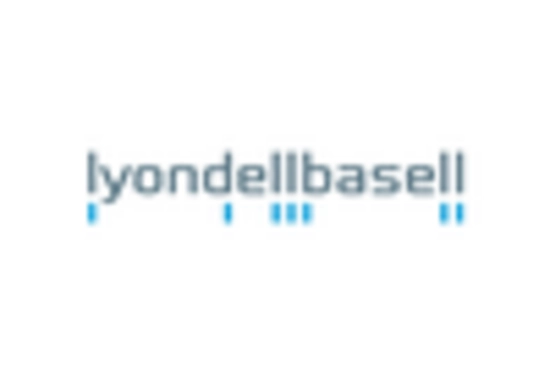Regulatory Frameworks
The evolving regulatory landscape surrounding plastic usage and waste management is influencing the Microplastic Filler Market. Governments are increasingly implementing stringent regulations aimed at reducing plastic pollution, which may drive the adoption of microplastic fillers as a sustainable alternative. For instance, regulations that promote the use of recycled materials in manufacturing processes could enhance the market for microplastic fillers. As industries adapt to comply with these regulations, the demand for compliant materials is expected to rise. This shift may result in a market expansion, with projections indicating a potential increase in market size by 15% over the next three years.
Market Diversification
The diversification of applications for microplastic fillers is emerging as a significant driver for the Microplastic Filler Market. These fillers are increasingly being utilized across various sectors, including automotive, construction, and consumer goods, which broadens their market appeal. The versatility of microplastic fillers allows manufacturers to enhance product durability and reduce costs, making them an attractive option. Recent analyses indicate that the automotive sector alone is expected to account for over 25% of the microplastic filler market by 2026, underscoring the potential for growth as industries continue to explore innovative applications.
Technological Innovations
Technological advancements in the production and application of microplastic fillers are likely to propel the Microplastic Filler Market forward. Innovations in processing techniques, such as improved methods for recycling plastics into fillers, have enhanced the quality and performance of these materials. Furthermore, the development of advanced formulations that optimize the properties of microplastic fillers for various applications, including construction and automotive sectors, indicates a growing market potential. Reports suggest that the market for advanced materials, including microplastic fillers, is expected to reach USD 5 billion by 2027, highlighting the importance of technology in driving market growth.
Sustainability Initiatives
The increasing emphasis on sustainability appears to be a pivotal driver for the Microplastic Filler Market. As industries strive to reduce their environmental footprint, the demand for eco-friendly materials has surged. Microplastic fillers, derived from recycled plastics, offer a viable solution for manufacturers seeking to enhance product performance while adhering to sustainability goals. Recent data indicates that the market for sustainable materials is projected to grow at a compound annual growth rate of approximately 10% over the next five years. This trend suggests that companies integrating microplastic fillers into their products may gain a competitive edge, appealing to environmentally conscious consumers and regulatory bodies alike.
Consumer Awareness and Demand
Growing consumer awareness regarding environmental issues is shaping the Microplastic Filler Market. As consumers become more informed about the impact of plastic waste, there is a noticeable shift towards products that utilize sustainable materials. This heightened awareness is driving manufacturers to seek alternatives, such as microplastic fillers, which can enhance product performance while minimizing environmental harm. Market Research Future indicates that approximately 60% of consumers are willing to pay a premium for products made with sustainable materials, suggesting a robust demand for microplastic fillers in various sectors, including packaging and textiles.

















Leave a Comment